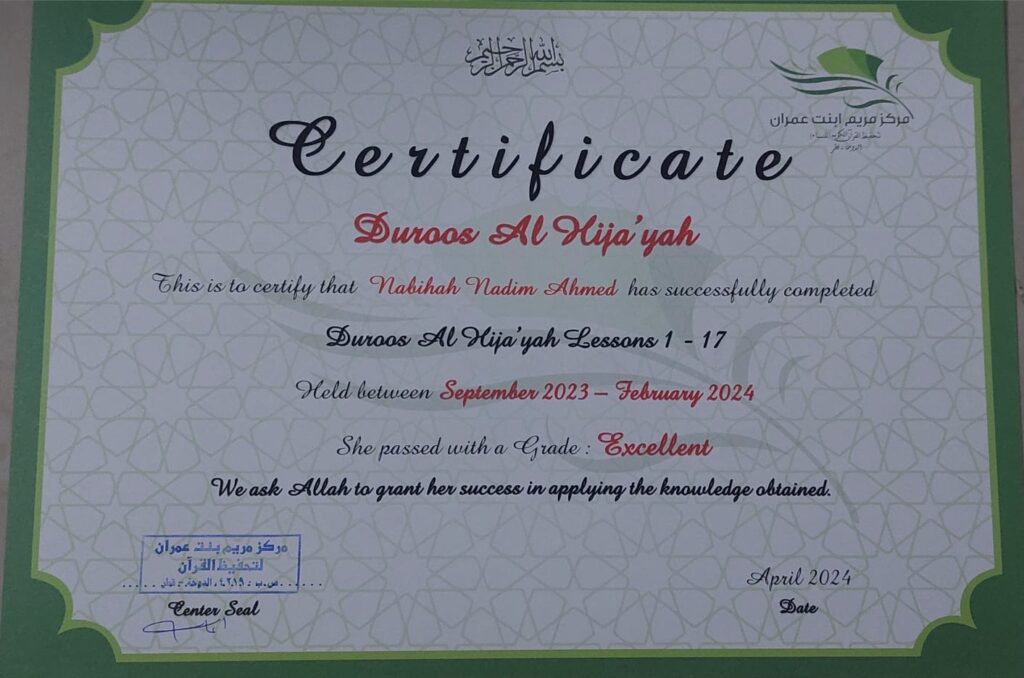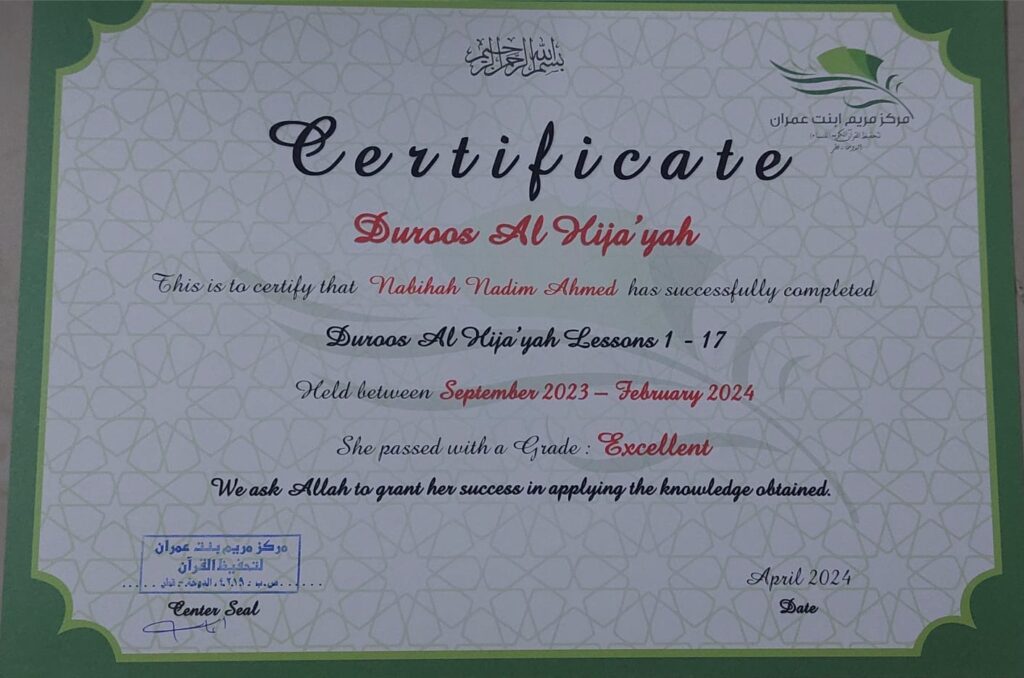The abacus is a simple, ancient calculating tool used for performing arithmetic operations such as addition, subtraction, multiplication, and division. It consists of a rectangular frame with rods or wires, each containing beads that can be moved back and forth. Originating over 2,000 years ago in regions such as Mesopotamia and China, the abacus continues to be used today, especially in parts of Asia, for teaching basic math skills. It helps learners develop a strong sense of numbers and improves concentration, memory, and mental calculation abilities. Modern abacus training often leads to the development of “mental abacus” skills, where users can visualize the abacus in their minds to perform fast and accurate calculations without the physical device.

Duroos Al-Hijayah refers to the lessons or teachings related to the Arabic alphabet.
It involves learning the pronunciation, shapes, and order of the Arabic letters.
These lessons are foundational for reading the Qur’an and Arabic texts.
They are commonly taught to beginners, especially in Islamic and Arabic language education.










